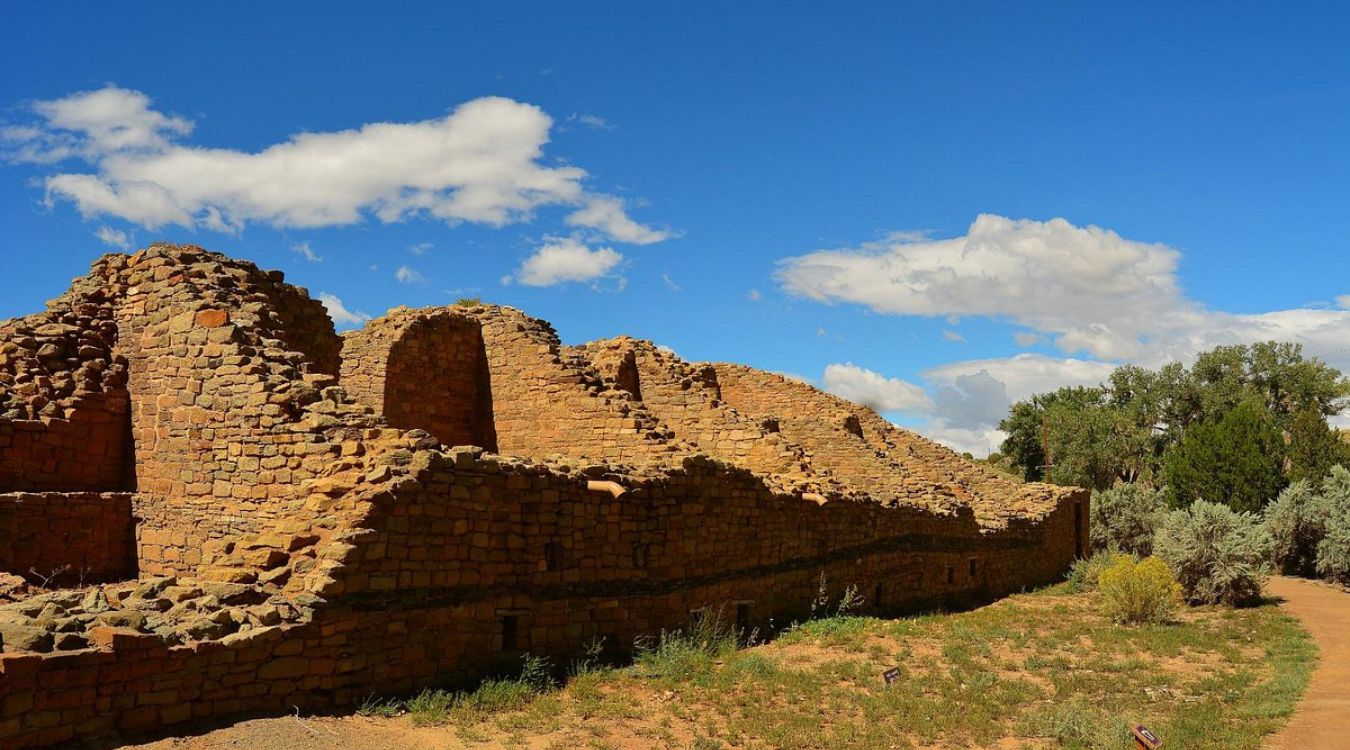Secrets Of New Mexico’s Aztec Stone Ruins

Have you ever wondered about the ancient mysteries hidden in New Mexico? The Aztec Stone Ruins offer a glimpse into a world long past. These ruins, located in the northwest corner of the state, are a fascinating site for history buffs and curious travelers alike. Built by the ancestral Puebloans, the structures date back to the 12th century. Walking through the ruins, you can almost feel the presence of the people who once lived there. From the intricate stonework to the expansive great kiva, every corner tells a story. Ready to step back in time and explore this ancient marvel? Let's dive into the secrets of the Aztec Stone Ruins.
Secrets of New Mexico's Aztec Stone Ruins
New Mexico's Aztec stone ruins hold mysteries and stories from ancient times. These ruins, built by the Ancestral Puebloans, offer a glimpse into a civilization that thrived long before modern technology. Let's uncover some of these secrets.
The Great Kiva
The Great Kiva stands as a testament to the architectural prowess of the Ancestral Puebloans. This massive ceremonial structure was a central part of their community life.
- Size and Structure: The Great Kiva is one of the largest kivas ever discovered, measuring over 40 feet in diameter. Its size suggests it was used for large gatherings and important ceremonies.
- Construction Techniques: Built with sandstone and mud mortar, the Great Kiva showcases advanced construction techniques. The walls are thick, providing stability and insulation.
- Symbolism: The kiva's design includes symbolic elements, such as the sipapu, a small hole in the floor representing the portal through which the ancestors emerged.
The West Ruin
The West Ruin is another significant site within the Aztec Ruins National Monument. This complex of rooms and plazas offers insights into daily life and social organization.
- Room Clusters: The West Ruin consists of over 400 rooms, arranged in clusters around central plazas. These clusters likely housed extended families or social groups.
- Artifacts: Excavations have uncovered numerous artifacts, including pottery, tools, and jewelry. These items provide clues about the daily activities and trade networks of the inhabitants.
- Architecture: The rooms are built with precision, featuring straight walls and well-fitted stones. Some rooms have T-shaped doorways, a distinctive feature of Ancestral Puebloan architecture.
The North Road
The North Road is a mysterious ancient roadway that extends from the Aztec Ruins to other significant sites. Its purpose and construction remain subjects of debate among archaeologists.
- Length and Direction: The North Road stretches for over 30 miles, heading north from the Aztec Ruins. Its straight path suggests it was an important route for travel or trade.
- Construction: The road is built with a compacted dirt surface, bordered by low stone walls. Its construction required significant labor and planning.
- Purpose: The exact purpose of the North Road is unknown. Some theories suggest it was a ceremonial route, while others propose it was used for trade or communication between distant communities.
The Hubbard Tri-wall Site
The Hubbard Tri-wall Site is a unique architectural feature within the Aztec Ruins. This structure consists of three concentric walls, creating a distinctive layout.
- Design: The tri-wall structure is rare, with only a few examples found in the Southwest. Its design includes three circular walls, with rooms and passageways between them.
- Function: The purpose of the tri-wall structure is not fully understood. It may have served as a ceremonial center, a defensive structure, or a communal living space.
- Artifacts: Excavations at the Hubbard Tri-wall Site have revealed pottery, tools, and other artifacts. These items suggest the site was an important part of the community's daily life.
The East Ruin
The East Ruin is another fascinating site within the Aztec Ruins National Monument. This area includes a series of rooms and plazas, offering further insights into the Ancestral Puebloan civilization.
- Room Layout: The East Ruin features a complex layout of rooms, arranged around central plazas. These rooms likely served as living spaces, storage areas, and workshops.
- Construction Materials: The walls are built with sandstone and mud mortar, similar to other structures in the Aztec Ruins. The use of local materials demonstrates the resourcefulness of the builders.
- Cultural Significance: The East Ruin provides evidence of the cultural and social practices of the Ancestral Puebloans. Artifacts found here include pottery, tools, and ceremonial items, shedding light on their way of life.
Discover the Magic of Aztec Stone Ruins
New Mexico's Aztec Stone Ruins offer a unique glimpse into ancient history. These ruins, with their intricate stonework and mysterious origins, captivate visitors. Exploring the site, you can almost feel the presence of the ancient people who once lived there. The ruins are not just about history; they are a testament to human ingenuity and resilience.
Visiting the Aztec Stone Ruins is more than just a trip. It's an adventure through time. The Great Kiva and other structures tell stories of a civilization that thrived in the harsh desert environment. Whether you're a history buff or just love exploring new places, these ruins have something for everyone.
Plan your visit to the Aztec Stone Ruins. Experience the magic and mystery of this incredible site. You won't regret it.

